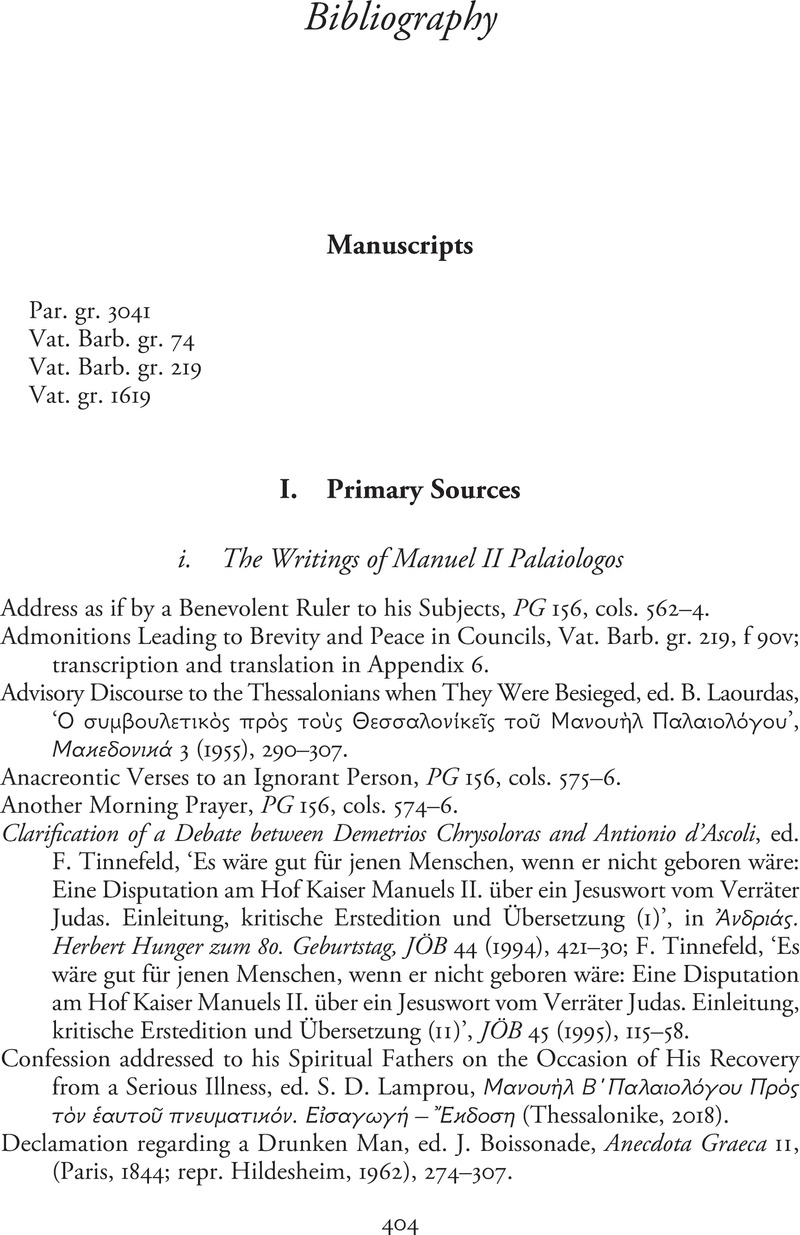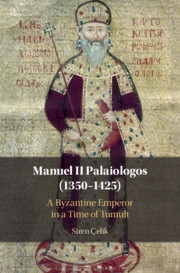Book contents
- Manuel II Palaiologos (1350–1425)
- Manuel II Palaiologos (1350–1425)
- Copyright page
- Dedication
- Dedication
- Contents
- Figures and Maps
- Acknowledgments
- Chronology of Manuel II Palaiologos’ Life
- Abbreviations
- The Family Tree of Manuel II Palaiologos
- Historical Figures
- Maps
- Introduction
- Chapter 1 The Young Manuel
- Chapter 2 Family Affairs
- Chapter 3 Fighting for Freedom
- Chapter 4 In Limbo
- Chapter 5 The Vassal Emperor
- Chapter 6 Besieged
- Chapter 7 The New Odysseus
- Chapter 8 A Clamorous Tranquillity
- Chapter 9 The Protean Emperor
- Chapter 10 Exchanging Empires
- Conclusion
- Book part
- Glossary
- Bibliography
- Index
- References
Bibliography
Published online by Cambridge University Press: 25 February 2021
- Manuel II Palaiologos (1350–1425)
- Manuel II Palaiologos (1350–1425)
- Copyright page
- Dedication
- Dedication
- Contents
- Figures and Maps
- Acknowledgments
- Chronology of Manuel II Palaiologos’ Life
- Abbreviations
- The Family Tree of Manuel II Palaiologos
- Historical Figures
- Maps
- Introduction
- Chapter 1 The Young Manuel
- Chapter 2 Family Affairs
- Chapter 3 Fighting for Freedom
- Chapter 4 In Limbo
- Chapter 5 The Vassal Emperor
- Chapter 6 Besieged
- Chapter 7 The New Odysseus
- Chapter 8 A Clamorous Tranquillity
- Chapter 9 The Protean Emperor
- Chapter 10 Exchanging Empires
- Conclusion
- Book part
- Glossary
- Bibliography
- Index
- References
Summary

- Type
- Chapter
- Information
- Manuel II Palaiologos (1350–1425)A Byzantine Emperor in a Time of Tumult, pp. 404 - 438Publisher: Cambridge University PressPrint publication year: 2021



